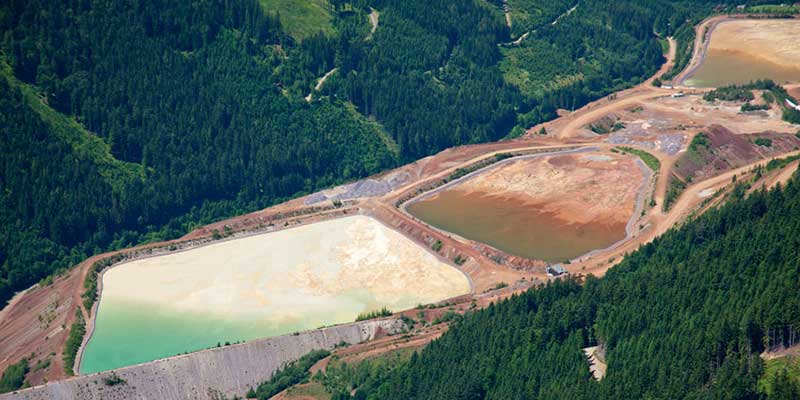Evaporation ponds are widely used to reduce the total volume of water that must be withdrawn, treated, and discharged.
Freshwater resources are protected as industry begins to put emphasis on sustainability
The mining industry has a great impact on water resources, both depleting water supplies with high usage and polluting them with discharges or seepage from tailings or waste rock impoundments.
To put the scale of industry in perspective, according to the United States Geological Survey (USGS), 4 billion gallons of water were withdrawn for mining operations in the U.S. in 2015, up 1% from 2010. This accounted for 1% of total U.S. water withdrawals. More than 70% of mining withdrawals came from groundwater sources, 65% of which were saline; 77% of the surface water used was fresh water. The USGS statistics, however, are aggregated to include petroleum exploration, so they cover extraction of minerals in solid, liquid, or gaseous forms alike.
Mining Water Management and Sustainability
Global sustainability awareness and environmental regulations that have encouraged greener water practices in the industry are now considered essential to public acceptance of modern mining. Because even perceived overuse or polluting practices may generate opposition to mining projects, water management strategies are now routinely instituted to mitigate environmental impact and are central to development, operation, and restoration. Some companies exceed regulatory compliance in order to maintain their status as good neighbors to nearby communities. A new Deloitte report also stresses a need to maintain the good reputation of the industry.
One way of greening mining operations is by capturing or diverting surface water streams and runoff that may wash contaminants into the environment. Other ways to prevent seepage and stop the escape of harmful substances is to protect piles of waste rock and ore from the rain, and to install liners.
Evaporation ponds and water recycling also are widely used for their ability to reduce the total volume of water that must be withdrawn, treated, and discharged. A great volume of water must, however, be treated either actively or passively, and the choice will depend on the specifics of the particular mining operation.
Active and Passive Water Treatment
In active treatment, advanced software predicts the chemistry of effluent before a mine is even constructed. Mine effluent is commonly acidic, requiring the addition of alkali to raise the pH, causing dissolved metals to settle to the bottom of sedimentation ponds for removal. For high effluent quality, ion exchangers, membrane filters, and reverse osmosis (RO) also are used.
Passive treatment often relies on artificial wetlands and concurrent water monitoring to take advantage of natural, bacteria-controlled metal precipitation, contaminant metabolism by plants, and filtration through sediment. Although it is not yet well suited for treating highly acidic mine water, the low cost continues to sustain interest.
After a Mine Closes
During mine closure, leftover ore piles are rinsed, tailings ponds are drained and capped, and remaining contaminated material is removed or stabilized. Continued monitoring is also a part of most closures. Most mines also stretch below the water table, so mines are dewatered by pumping out the aquifer during and after mine operation. Once operations stop, the cessation of pumping results in flooding of open pits and underground spaces as the water table rises again. Continued pumping and treatment after operation is considered possibly the most cost-effective way of protecting water resources after mine closure.
Decentralized Water Treatment
As groundwater resources continue to become scarcer, the importance of limiting the volume of water required for mining operations and simultaneously protecting the quality of water discharged after use will become more and more important to maintaining receptiveness to the industry.
Treating mining water for reuse can reduce the need for fresh water, preserving precious resources. Mining is an ideal industry for decentralized water treatment. Not only because mines are often far from water infrastructure, but also because mining is a transient industry, frequently moving operations once old mines have been exhausted.
A new generation of smart, packaged water treatment units lend themselves to decentralized strategies, such as Fluence’s NIROBOX™ desalination plants and Aspiral™ wastewater treatment units. They are built into standard shipping containers, which allows for maximum flexibility. They can be moved from one mine to another and installed with a minimum of site preparation.
What can Fluence do to help your mining operation with its water stewardship? Contact our experts to discuss details.

